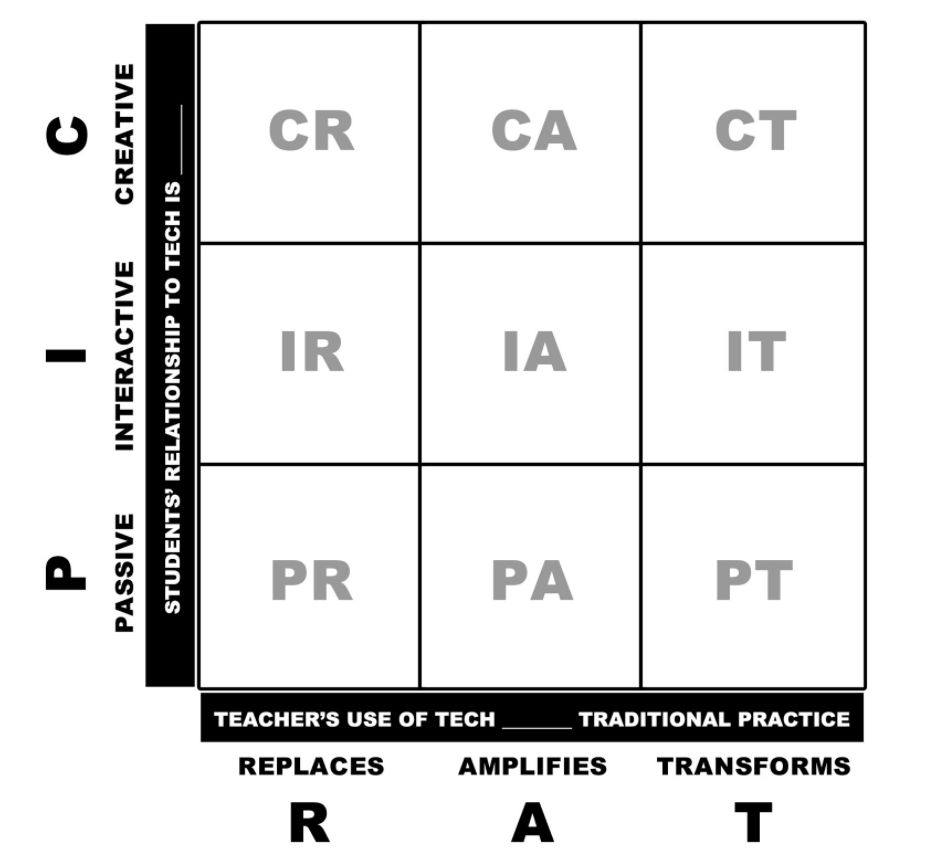New framework helps unlock transformative, creative learning
May 2, 2018 |
May 2, 2018 |
 In today’s world, many schools experimenting with, or building on, classroom education programs, like blended learning, often get so excited about the new technology available that they may neglect the underlying effectiveness of it for the program, and ultimately student and classroom performance.
In today’s world, many schools experimenting with, or building on, classroom education programs, like blended learning, often get so excited about the new technology available that they may neglect the underlying effectiveness of it for the program, and ultimately student and classroom performance.
As an administrator or teacher, it can be difficult to evaluate the efforts to use technology to better support programs like blended learning in classrooms effectively; in other words, it can be tough determining whether a program is being supported by the technology, or if the classroom is merely tech-rich. Researchers have developed models or rubrics to evaluate effective technology use in K-12, and you may have heard of TPACK, RAT, or SAMR. I won’t describe all the models here, but I want to introduce one model being used called PIC-RAT. It expands on a well-known rubric by incorporating a very simplified version of Bloom’s taxonomy (PIC) with the often used RAT framework (Hughes, Thomas & Scharber, 2006).
PIC-RAT is a recently developed technology integration model whose framework assumes that there are two foundational questions that a teacher must ask about any technology use in their classrooms. These include:
This framework considers the intersection of these two questions, and though effective technology uses may fall anywhere on the matrix, PIC-RAT is meant to encourage teachers to reflect on their practice and consider ways to move their technology use more toward the top-right of the matrix:

(K-12 Technology Integration by Dr. Royce Kimmons)
PIC-RAT for enhancing blended learning
In a blended context, school teachers and leaders are constantly trying to move the use of technology to the Amplify and Transform side of the matrix, using technology in ways that benefit teachers and students. As part of data-driven personalization efforts integrated in a blended program, the use of personalized learning software, such as Lexia Reading, Khan Academy, iRead, iReady, or any number of software types, have the potential to Amplify and Transform traditional practice if used effectively by teachers.
Another way that K-12 schools can use technology effectively in blended programs is by ensuring students use technology in Interactive and Creative ways. One example is by teaching computational thinking skills, or more specifically, how to code to young kids. Scratch is one technology that does this, and in the coming years there will likely be more options out there that help students think in ways that prepare them to build technology tools of the future.
If you notice that a student’s experience with technology is mostly Passive, or an activity is mostly Replacing traditional practice, think of tools or ways that might move you higher and further on the scale. For example, instead of having students just watch a video at home about a particular topic for homework (passive), you might consider using EdPuzzle, which inserts questions for comprehension in the middle of the video and makes the experience Interactive; it also Transforms the experience when you as the teacher view student scores before the next class period and prepare to teach with that data in mind.
Examples
What do you think about the following examples of technology integration? Where would you place them on the matrix? (Examples from K-12 Technology Integration by Dr. Royce Kimmons)
If you want a more detailed explanation of PIC-RAT, please watch this video.
Answer Key
We have provided several possible answers for certain examples. There can be uses of technology that do not neatly fall into one category or another in the PIC-RAT model, because contextual factors may change the nature of the activity. If you disagree with some of the answers provided, this could lead to a great discussion with fellow blended teachers.
About the author: Emily Pulham is a doctoral candidate in Instructional Psychology and Technology at Brigham Young University with a bachelors in vocal performance. Emily is also a current Measurement Fellow at The Learning Accelerator.
Leave a Reply